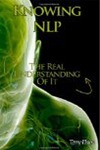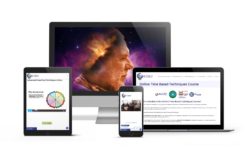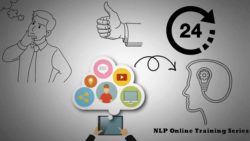The Book that helps you understand NLP
I wrote this book to assist a greater learning of the art and science called Neuro Linguistic Programming and fill a gap that I perceive from people wanting to know more easy to understand knowledge about NLP. This book is also for those who have been trained in NLP to gain a deeper understanding of what they think they know is NLP!
One of the most difficult questions to answer is the basic learner’s initial comment “What is NLP?” Yet even experienced practitioners should still be asking that question! To answer it, we will have to uncover what underpins the thinking and being of a skilled NLP practitioner. Some of the secrets I’ll approach in this book will surprise you and shock you. The purpose is to show you what’s behind all of the principles that have been trained over the last 35-plus years since its inception. Many NLP trainers may also be surprised to find that what they teach isn’t actually NLP at all. Just what was marketed as NLP!
Here’s an excerpt:
Chapter one: How do you prepare a room or a clients mind?
The preparing of a room is something I learned a long time ago whilst working for a self-development company: You have to completely clear the room of anything that isn’t to do with the training or situation at hand! For instance, take out any newspapers, books, cups, ornaments (that don’t have to do with the context at hand), tables chairs that are superfluous and even pictures that don’t play any role in what’s happening in that session. All of these things will be ‘clocked’ by the unconscious mind and detract from the power of the meeting. Before the session, you will have given your client (or the people on the training), a series of ordeals to perform that lets them know something big is about to happen. In accordance with the metaphor in the previous section, the seed is being prepared!
With my NLP trainings, they have MP3s to listen to and a test to fill out. It’s always funny to watch peoples personalities deal with the ordeals. We all attempt to do the ordeals in our own way: If we have a rebellious past, we won’t do the test at all or if we don’t complete things, we won’t complete the test!
All these feedbacks are great markers for you to be able to interact with that personality before the session or training to weed out that behavior before you see them. You simply point out the deeds they are displaying and ask them about their patterns in life. Most people are quite happy that you interact on this level and that their behaviours are ‘busted’ at this time. From your side, make sure you have cleaned out your own cupboards in life before seeing the person or people. Do your ‘washing up’ in life and make sure you are as ‘complete’ as possible with your life situations. Do your preparation for the session in good time and look to see how you can improve from the last time. Then it’s time to focus and vision the sitting into existence. Perhaps meditate on the session in hand; you can pick up an immeasurable amount of information when you tune in, in advance of your meeting.
Covered inside are all the main techniques of NLP, plus advanced new thinking that Terry has learned and progressed in his decades as a trainer of NLP. These new processes enable you to perform the NLP techniques conversationally, without having to use clumsy scripts. So whether you are new to NLP or just want to see NLP newly, this is a book for you!
Knowing NLP is one my my latest books aimed at the casual enquirer yet also NLP Practitioners and Trainers who want to know more about the underlying foundation of the techniques inside NLP.
Here’s another excerpt:
The myth of Matching and Mirroring
“What most NLP practitioners have been trained in, is something called matching and mirroring. I am going to show you how this works in the next few paragraphs. Before that though, I am going to denominalise it and throw out the myth that it is normally associated with it. What actually happens is that two or more people share energy fields. You can feel if someone else is ‘with’ you or not ‘with’ you in energy. You get good ‘vibes’ (energy vibrations, of course), or not! That’s how you can easily turn your back on someone and still stay very connected (and they will still feel the connection). So the next pieces on matching and mirroring are a little redundant, unless you don’t know how to connect with people energetically. That’s not to say that matching and mirroring doesn’t work, far from it: In the process of matching and mirroring, at the very least you have to be on the outside, observing them. Then you can’t be completely in your own head, without any frame of reference to their body language and state!
So what I am saying is that the natural process of rapport comes from an inner hunger and thirst to really connect. What is really happening is you are connecting with people energetically. When you recognise that it’s the energy that’s connecting, you won’t have to use your body movements so much to make this happen. The process involved requires intention on your part. To develop energy connections involves wanting to and then making it happen.
I rarely have to ‘turn on’ my physical rapport techniques because there are normally so many naturally occurring good feelings present in any situation to begin with. If you can’t do that (or that’s still not working), then use the processes below.”
Here’s what people say about Knowing NLP:
“I’d recommend Knowing NLP to anyone looking for an easy -to -understand yet profound insight into how NLP really works.”
Adam Sprackling , NLP Trainer & Golf Mind Coach
“Knowing NLP is a book for the beginner yet also has many aspects that as a Trainer I found really useful too. It is noticeable that Terry has been studying what really causes change, which is not just about NLP, but the process of life
Susanne Billander, Master Practitioner of NLP & Master Trainer META-Health Coach
and transformation itself.”
“This is the book I’ve been looking for. It’s a journey into the real understanding of NLP!”
Glen McPheat , NLP Master Practitioner & head of learning and development at Christ’s Hospital, Horsham
I wrote Knowing NLP because I wanted a book I could recommend to anyone, whether they were experienced or not.
You can find it on Amazon.com or a PDF ebook through myself.




